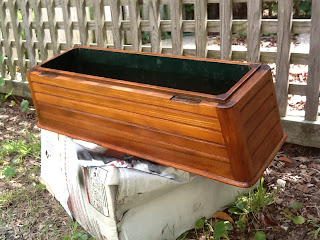Batteries
 |
| Fresh paint, ready for batteries |
After some repeated denials of the truth, we decided that the battery bank needed to be replaced. We had already replaced the starting battery, but two of the four house batteries had weak or dead cells. We could wait, or replace two batteries, or we could simply just get the new batteries. Besides, we knew if we were going to get refrigerator/freezer working, it was going to demand a good battery bank.
 |
| New batteries and straps in place |
We decided to go with the wet cell batteries as this required fewer changes.
Refrigerator/Freezer
 |
| CAREL controller |
 |
| The fridge and freezer running as they should. YEA! |
Bright work, as the name describes, is all of the woodwork and brass and bronze and more that demands you clean, polish, and shine. That is what everybody expects you to do, because that is what they see. They don't see or comment on that new battery bank, or that new thermostatic controller. No. They gently suggest though, that "you really do have a lot of work to do" as they turn their eyes to survey all of the peeling varnish and grey teak. It is a common debate about how much effort cruisers should put into this effort, and ultimately, whether it is really necessary. But the debate goes on as does the work. We have begun a concerted effort on tackling the bright work, and there is quite a lot of it.
The little deck chests near the mast, for example, sure were an eyesore with their peeling varnish. A heat gun and scraper began to remedy that. It is actually very satisfying work. I would do this any day rather than mow the lawn.
 |
| Scraping the deck chest |
 |
| Just another coat and it will be done |
 |
| Driving around the neighborhood |
 |
| "ZOE" |
 |
| Ready to go |
We cleaned up the dinghy and motor (our car). "Zoe", as she is now called, will be ready to go when we are.
One important lesson most boaters eventually learn is patience. I am learning this and working with it. Most things take longer than you think they should to complete. But maybe that is to simply a way for you to appreciate them more when they are finally done.
Here are some pictures of a project that is still underway. Can you guess what this thing is?
Stay tuned to see the transformation of this mystery contraption.

